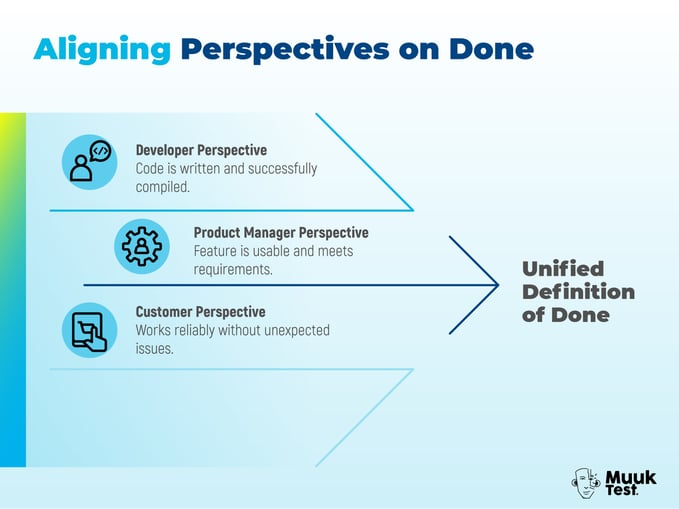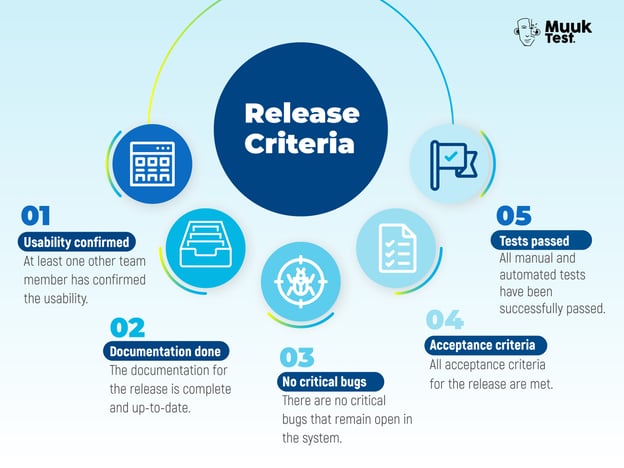-
QA is a culture, not just a role: In early startups, everyone shares responsibility for quality. Embedding QA from day one prevents costly bugs and builds user trust.
-
Six practical steps build lasting QA habits: Define “done,” shift testing left, start small with automation, keep documentation lean, and hire people who value quality.
-
Trust is the ultimate outcome: A strong QA culture helps startups move faster, break less, and earn the loyalty of customers, investors, and teams. And while implementing a quality-first culture early on can feel like just one more thing to stress about, companies like MuukTest, backed by decades of QA experience, provide an easy button to early-stage QA.

When you work in a startup, it's like driving on a freeway. It is very exciting, fast-paced, high-energy, and constantly iterating to find whether your product fits in the market. Speed becomes the default currency here. Features are pushed out as quickly as possible, sometimes with the attitude of, “I will fix it later”, but let's first release it. That is where the problem lies.
Why QA Culture Matters for Startups
Some founders learn this too late. Fixing it later always costs more, not just in terms of money, but in user trust and team confidence. The world's most successful startups, for example, Airbnb, embedded quality very early on. They understood that quality is not just about speed; it is about the foundations that allow you to go faster without breaking anything. What is the secret here? Create a QA culture from day one and not just a QA team. This involves developing a mindset within the team that makes them feel responsible for delivering a high-quality product.
Let’s begin looking at some key points to achieve our goals:
Steps to Build a QA Culture in Your Startup
Step 1: Make QA a Mindset, Not Just a Role
The first step to create a QA culture is to understand that QA is a mindset and not a role. Quality assurance in startups often gets misunderstood as a tester's job. But if you go deep, QA is a shared responsibility. It is not a particular person's job.
At the earliest stage, you might not even have a dedicated QA engineer. That is very common. The founders, developers, product managers, and designers will all be wearing a QA hat.
Consider it this way: If you launch a feature that works perfectly for one user segment but crashes for another, it is not just a bug; it is a broken promise. Broken promise with the customers.
The QA culture ensures that the promise is kept consistently, regardless of who's coding or who's testing. If I give you an example, Basecamp in its early days didn't have a QA team. Instead, they made it a rule that every developer tested their own code and peer-reviewed others. That practice helped them scale without losing scalability.
Step 2: Define “Done” to Align Your Startup Team
Next, start with an agreed-upon definition of done. A strong QA culture always starts with alignment. In many startups, the term "done" can be interpreted differently by different people. For example:

The fix is to create a strong definition of done. And that should include:

By baking these checks into the workflow, you reduce last-minute surprises and keep quality consistent.
Step 3: Shift Left and Catch Bugs Early
In startups, every wasted day matters. The earlier you catch an issue, the cheaper it is to fix. This is a well-known fact. Shift left testing means thinking about quality before the first line of code is written. Follow these tips:
- Write test scenarios alongside the feature specs
- Include QA discussions in sprint planning
- Have developers run unit tests before merging the code
For example, in Slack's early days, they insisted on an automated test suite even before the team was under 20 people. This allowed them to deploy multiple times a day without fear of major regressions.
Step 4: Start Small with Test Automation
You don't need a full-blown automation team in the first month. Set up even a minimal automated test suite to save huge amounts of time later. Always begin with:
- Smoke tests to check the most critical paths
- Regression tests to ensure new features don't break the old ones
- Pipeline integration to run tests automatically before deploying
Tools like Selenium, Playwright, or even simple Postman scripts can give startups a quick boost in quality without heavy investment.
Step 5: Keep QA Documentation Lean and Useful
As your next step, begin creating light documents. Startups do not need 200-page QA manuals, but what they do need is a living record of lessons learned.
You can maintain a lightweight test case repository in Notion or Google Docs. After every bug that escapes to production, do a blameless postmortem and learn the lessons.
For example, one fintech startup where I worked kept a wall of bugs. It is a simple Trello board showcasing the funniest, weirdest, and even the most painful bugs that developers have fixed. It became both a teaching tool and a reminder to test thoroughly.
Step 6: Hire for Quality-First Mindsets
Finally, change your hiring mindset. When you start expanding your team, hire people who see quality as part of the build process. You may ask questions like:
- Tell me about a time you caught a bug before it reached customers.
- How do you decide what to test?
If a candidate talks about user impact, testing strategies, and preventive measures, they will definitely help reinforce your QA culture.
Conclusion: Build trust from day one
Startups can thrive or fail based on the trust they earn from users, investors, and their own teams. Quality is not just a technical measure; it is a promise kept with everyone who believes in you.
When you build a QA culture from day one, you are telling your teams and your customers that we care to make it right every time.
It doesn't require a big budget or a full department at the beginning. What it does require is intention. Make quality part of the conversation, catch issues early, and celebrate when you prevent problems.
Do this consistently and you will move faster, break less, and earn something far more valuable than money: The trust and loyalty of the people who believe in your product.

Further Reading on QA for Startups
- https://morethantesting.com/blog/first-month-as-qa-lead-in-a-startup/
- https://medium.com/qevolution/how-i-would-build-a-qa-process-in-a-startup-with-only-1-developer-and-0-testers-a4060427aa58
- https://flexilabs.co/blogs/the-role-of-qa-services-in-startup-growth/
Frequently Asked Questions
Why is QA important for startups?
QA helps startups move fast without breaking user trust. Bugs in early releases can hurt reputation, slow growth, and frustrate customers. Embedding QA from day one ensures your product scales smoothly and keeps users loyal.
Do startups need a dedicated QA team at the beginning?
Not always. Early on, QA is often shared by developers and product managers. A dedicated QA hire can come later, but to fill the gap, startups can lean on test automation solutions like MuukTest to get reliable coverage without building a full team right away.
What are the first steps to building a QA culture in a small startup?
Start with a clear “definition of done,” shift testing left, and automate simple but critical paths (like smoke tests). Keep documentation light but consistent, and hire people who naturally think about quality as part of building.
How can startups balance speed and quality in testing?
Balancing speed and quality means automating repetitive checks, involving QA early in the dev cycle, and focusing on preventing issues instead of patching them later. Many startups find that even lightweight automation saves time and reduces bottlenecks.
Can MuukTest help startups create a QA culture?
Yes, MuukTest partners with startups that don’t yet have QA teams or processes in place. Our AI-powered platform helps automate end-to-end tests in weeks, while our experts guide teams on best practices for embedding QA into their culture. This lets founders move fast without sacrificing trust and product quality.




%20(1).png?width=150&height=69&name=MuukTest-logo---light-background%20(3)%20(1).png)


